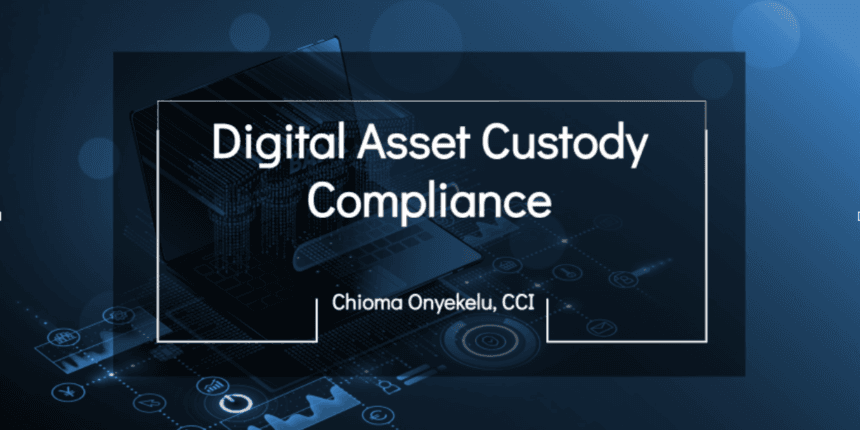Why do digital assets businesses opt for third-party digital assets custody despite building atop highly secure chains like Ethereum and Solana? As the digital assets market cap surpasses the $2.5T mark, and an increasing number of users jump on the bandwagon, the risk of cyber thefts remains. Digital assets worth over $473M have been lost to hacks and frauds in 2024 so far. However, cyber theft is one of the many reasons institutions are flocking toward regulated third-party digital assets custody.
This blog attempts to decode the increasing demand for regulated third-party digital assets custody. This could include increasing cyber theft risks, regulatory compliance, operational requirements, the need to gain users’ trust, and other security concerns. But before that, let’s learn more about third-party digital assets custody.
What Is Digital Assets Third-Party Custody?
Digital assets custody refers to safeguarding private keys by storing it in an external wallet. Third-party digital assets custody is when an exchange, dApp, or protocol outsources this storage and management instead of managing it in-house.
Third-party Digital Assets Custody platforms like Liminal Custody, BitGo, and Anchorage offer a robust and secure wallet infrastructure to digital assets-native businesses and institutions. This allows institutions to focus on scaling and innovation while the custody solution provider takes care of asset security, regulatory compliance, and much more.
Rising Institutional Interest In Digital Assets
As of 2023, 4 in 10 institutional investors had some exposure to digital assets, according to a survey. This marked an 8 percent rise from 2021. One-third of these investors already have 10 percent of their portfolio in digital assets. Most importantly, 67 percent of these investors cite the availability of custody infrastructure as a primary reason behind their increasing interest in digital assets.
With the SEC approving Spot BTC and ETH ETFs and the growing anticipation for a bull market, institutional investment in virtual digital assets is only going to increase. 74% of sovereign wealth funds and over 60% of hedge funds plan to increase their digital assets investments dramatically. But this doesn’t reduce the risk of cyber theft. Plus, uncertain and ambiguous regulation guidelines are a major challenge for anyone foraying in the digital asset space.
Now, most of these institutions are not new to investment, but certainly new to virtual digital assets and regulations around them. This makes a strong case for professional custody providers with industry expertise to lend a helping hand.
4 Reasons Institutions Need Third-Party Digital Assets Custody
Security Concerns:
The digital assets landscape is fraught with risks like cyber attacks, phishing, rug pulls, and other security risks. Digital assets worth billions of dollars have been lost over the years due to such risks. Despite the highly secure blockchain technology, external actors have been successful in draining wallets through sophisticated hacks.
Such security risks require a professional response led by professionals in digital asset custody and cyber security – something institutions lack. Institutional investors have realized the need for bank-grade security with the ease of plug-and-play in the digital assets space and this is why the demand for third-party digital assets custody platforms continues to soar.
Third-party digital assets custody solutions mitigate emerging security risks through advanced security features, including multi-signature wallets, and cold storage. On top of that, these custody providers also insure the digital assets against risks, offering an additional layer of security.
Regulatory Compliance:
While digital assets are all about democratizing global finance, institutions and businesses operating in different countries are accountable to the laws there, which could be entirely different. Some of the leading global economies have strict AML and CTF laws that could be difficult to mitigate, especially if an institution has a business presence in multiple countries.
The ever-evolving landscape of digital assets regulations is one of the biggest challenges that institutional investors face and this is another area where reputed digital assets custodians can play a helping hand. Compliance requirements such as AML and KYC may vary from country to country or state to state and third-party digital assets custody providers offer customizable custody solutions to deal with it. Also, they may have partnerships with government agencies dealing in digital assets and possess certifications like CCSS, TSCP, FASP, and VARA.
Regulatory bodies like the SEC have been penalizing institutions for not complying with the regulatory framework. The recent example of the SEC seeking nearly $2B from Ripple highlights what can go wrong with institutions if they fail to comply with the regulations. This retaliation has triggered a massive demand for reputed digital assets custodians.
Operational Efficiency
While the digital assets industry has made significant advancements with innovators pushing for chain abstraction, fragmented liquidity is a reality due to the presence of tens of prominent chains and thousands of different virtual digital assets.
Dealing with so many virtual digital assets could be extremely difficult for institutional investors with a basic understanding of the ecosystem. What they need is a trusted custody partner that supports all the major virtual digital assets to streamline asset management and minimize operational complexities.
Also, automation is taking over in the DeFi space while TradFi is fraught with risks often caused due to the involvement of an increased number of intermediaries. Emerging third-party digital assets custody solutions replace human intervention with an automation engine, minimizing the chances of human errors and enhancing operational efficiency substantially.
Trust and Reputation
Reputed digital assets custodians have undergone tight scrutiny, endless reviews, and numerous modifications over the years to establish themselves as the go-to platform for the seamless and secure custody of institutional assets. The track record of digital assets custodians like Liminal, which includes offering custody to leading exchanges, OTC platforms, hedge funds, and market makers, has helped them build a reputation and instill confidence among institutional investors.
Trust being the cornerstone in the decision-making process, institutions seldom face any challenge in finding the best third-party digital assets custody platform when the need arises.
Future Outlook For Digital Assets Custodians and Institutions
Trends indicate an overwhelming rise in institutional investments in digital assets amidst the anticipation of a massive bull run. With leading banks and financial institutions showing faith in the underlying technology, i.e. blockchain, it is only a matter of time before global finance goes digital. However, challenges like evolving regulatory frameworks and security risks continue to affect the transition from CeFi to DeFi.
The increasing demand for third-party digital assets custodians comes from the realization of the need for a trusted partner that can help them secure assets while streamlining operations in multiple countries through timely regulatory compliance.
The demand for digital assets custodians is only going to increase over the years and these platforms are bound to face tighter scrutiny due to emerging challenges. Platforms like Liminal are bound to play a key role in the mass adoption of digital assets.










